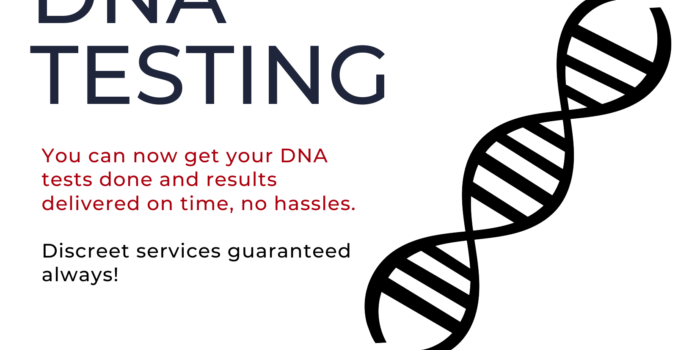DNA paternity testing is a technique that can be used to determine the biological father of a child. This test is used when there is a question about who the father of a child is.
DNA paternity testing is based on the idea that DNA is a genetic marker that can be used to identify a person or group of people.
The first step in DNA paternity testing is to collect a sample of the person’s DNA.
See also: Eight Factors That Are Killing Your Sex Drive As A Man
This can be done through a blood draw, a cheek swab, or a hair sample.
The next step in DNA paternity testing is to analyze the sample. This analysis will determine the genetic markers in the sample.
These genetic markers can be used to identify the person or group of people who the sample belongs to.
Once the genetic markers have been identified, they can be used to determine who the real parents of the child.
What is a DNA paternity test?
The genetic material you inherit from your mother and father is called deoxyribonucleic acid, or DNA. The term “paternity” means a father.
Using DNA, often extracted from a cheek swab, a DNA paternity test may establish if a man is the child’s biological father.
How reliable is a paternity test using DNA?
Paternity testing using DNA are quite precise. If a guy isn’t a person’s biological father, a test can identify him with a 99.9% accuracy rate.
Why are DNA paternity testing required?
It might be crucial to prove paternity for a number of reasons. It can assist:
Obtain legal rights to inheritance, Social Security benefits, child support, and child custody.
Find connections to hereditary disorders that may have an impact on your long-term health.
See also: DNA TEST – LEGAL PATERNITY SCREENING
What kinds of DNA paternity testing are there?
The test has to be performed at a medical facility if you’re trying to establish or refute paternity for legal reasons (a legal DNA paternity test).
How is a paternity test using DNA conducted?
There are two reliable methods for determining paternity:
Blood tests: At a doctor’s office, the prospective father and the kid provide blood samples. For analysis, the facility transmits the samples to a lab.
Cheek swabs: To check for buccal (cheek) cells, the prospective father and kid swab the inside of their cheeks. The cotton swab applicators are mailed to a specified lab.
How is the paternity established?
DNA sequencing tests are carried out in the lab. These examinations seek genetic compatibility between the prospective father and the kid. Paternity is established through a match.
*AD: Know your sexual health status today, click Book Test to get started.
Can a test establish paternity while a woman is pregnant?
Before a child is born, paternity can be verified in three distinct ways. The tests are just as precise as those done after a baby is born. The three techniques consist of:
Non-invasive prenatal paternity test (NIPP): This test examines fetal DNA discovered in the first trimester of a pregnant woman’s blood.
A lab expert matches the fetal DNA data to DNA from a cheek cell sample belonging to a putative father.
During chorionic villus sampling (CVS), a medical professional removes a little piece of placental tissue. The mother’s cervix or abdomen are used for this surgery.
DNA from the sample is compared to the mother’s and probable father’s DNA in a laboratory. Usually, CVS occurs 10 to 13 weeks following a woman’s previous menstrual cycle.
There is a small chance of miscarriage or pregnancy loss with the surgery.
An amniocentesis involves the removal of a tiny volume of amniotic fluid by a medical professional. A needle is injected into the mother’s abdomen during the test.
The fluid sample is compared in a lab to the mother’s and possible father’s DNA. Between the fifteenth and twenty-first weeks of pregnancy, amniocentesis is performed.
The chance of miscarriage is somewhat increased by the test.
See also: DNA TEST – PEACE OF MIND
Can a DNA ancestry test be used to establish paternity?
Only a DNA paternity test can conclusively show a father-child DNA match, however ancestry DNA can suggest prospective DNA matches.
To Conduct Your Child’s DNA Test At Our Online Pharmacy Today
How We At Mysp Conduct DNA Test
In doubt of your child’s paternity?
Let science help you confirm the paternity of your child with this highly effective procedures.
The test procedure is not applicable to unborn children.
This type of DNA test is admissible in court.
Sample Required:
Preferably Buccal swabs of father and child. Other admissible samples are hair and nails.
Duration For Test Results:
Results are usually sent to the patient’s mail within 7-15 working days
*You would be required to select the test sample collection option of your choice of ‘Home service collection’ or ‘Walk-in Drop off’ options.
Terms and conditions
Time for Walk-in sample collection within Lagos — (9 AM – 7 PM) Mon-Sat
Time for Home service sample collection in Lagos — (9 AM- 2 PM) Mon-Sat
Visit MYSP Pharmacy To Conduct your child’s paternity test






